Text
Artist Statement - Stella Ahn
<Goodbye New York>






<Goodbye New York>
After sixteen months’ suffering of indecision—between optimistic prospect of future, of improvement, and resistance to (yet another) change, versus the long-overdue resolution of homesickness, disbelonging, and insecurity—I have finally decided to leave New York. While it is impossible to break down this decision given the time and space—of which I do not know if there can ever be enough—I wished to instead capture and document the people, places and things I have loved and hated in the city, things that consumed my time, thoughts and emotions, things that both prompted and hindered me to leave. These are snapshots of moments, people, the fleeting ephemera of my youth that went by all too quickly, frozen for the sake of loss of departure, suspending my immortal time in the city, which I will come back to over and over to savor the pain, confusion, losses, to mourn over what I had and didn’t have, what I could have had, the termination of potentials, which the thoughts and the vivid memories I know will haunt me forever, even in my most restful dreams, it is the price of home, belonging, and security.
1 note
·
View note
Text
Exhibit Review - Ace Buckley
Another student and I went to the 303 Gallery in Chelsea and saw the exhibit by Florian Maier-Aichen. We walked into a big room with all white walls and only about three photographs on each wall. The super modern feel of the space, as well as the big white emptiness in between the few photographs gave me a weary feeling. It felt futuristic. There wasn’t the homey sensation you get in a museum like the Norton Simon in Los Angeles or the historic feeling of museums like the Getty. I felt very alone and my emotions felt muted by the environment. Although I don’t know if I enjoyed this feeling, it definitely fit with the pieces of art.
The pieces of art where photographs that Maier-Aichen had imposed elements on top of. For example, some of the pieces were photos of landscapes with colorful blooms of light imposed on top of the landscapes. The art felt very modern and almost electronic. They looked a lot like artsy screen savers. The uses of color and saturation was clearly the main point of these photos and that is not enough for me to be intrigued by a piece of art. The technique overpowered anything else Maier-Aichen attempted to do with any of the photos. To me, you have to be emotionally triggered by something in a photo for it to mean something more then a cool iPhone background.
One aspect of the pieces of art that did intrigue me was the illusion of three dimensionality in each photo. By this I mean more then the use of depth in the photos, It felt as if each piece was its own modern three dimensional sculpture. Maier-Aichen caused this effect through all the artificial layers on top of a standard photo. Also, the use of hyper-color helps the depth within the actual landscape intensify.
0 notes
Text
Todd Hido - Ace Buckley


All of Todd Hido’s work elicits a feeling - the same feeling. No matter the subject of the photo, the audience is supposed to experience an empty and solemn feeling in their gut. Something is off and dissonant with all of his photos. This is not a negative critique. His mastery of this emotion is quite impressive and I enjoy his photography fully. Hido is at a level of expertise in his career where he is past the point of simply having a “technical style” and he has gone even further and has developed a distinct point of view.
Hido grew up in Kent, Ohio - a smallish town most well known for Kent State University, a relatively unnotable college (). This upbringing, I believe, influenced not only the subject matter of his photos but his point of view. He says in an interview, “I believe that all those signs from your past and all those feelings and memories certainly come together, often subconsciously, and form some kind of a fragmented narrative. Often you're telling your own story but you may not even know it.”(). Growing up in a smaller town, people's lives are very internal lives. I feel like it is hard to understand the personal lives of people from small towns from an outside perspective. In Hido’s work, he never gives us any hints as to who his subjects are as people. Other photographers would try and add a little bit of context so the audience can form a narrative around the photograph. As humans, it is our nature. We want to be able to form patterns into a full understanding of something, someone, or a situation by examining details. He doesn’t give any of these details. Yet it is important to him that the presence of people are felt in most of his pictures even if they aren’t portraits.
In the mid 1990’s, Hido started his body of work “Homes at Night.” The subject matter of this collection is exactly what it would seem - a bunch of pictures of houses at night. But even these photos without people imply the presence of people because in most of the pictures, the lights are on inside the home being photographed. This is particularly obvious because of Hido’s technical process. He takes super long exposures so even the shadows have information at night and as a result of this, the practical light in the interiors of the houses are blown out and blooming out the windows. But this detail could not just be by accident because it shows up in every single photo in his body of work. Also, he frames in a way that forces our focus to go right to the lit windows. This can be attributed to the fact that the human eye naturally goes to the brightest part of an image; Hido knows this and uses it to his advantage. He guides our eye through the image and forces us to discover different aspects of the photo in an order that he carefully dictates. This journey of discovery and emphasis on what is not seen is consistent in his body of work and his technique is perfected to execute this effect. Throughout this whole body of work, the homes all have a similar feeling, technique and intention. You could see one of the photographs in a completely random context and know it was one of Hido’s.
“Homes at Night” is a project Hido has consistently worked on for over 20 years, yet the photos don’t hint at any evolution. Hido goes out by himself late at night and sets up his camera on a tripod and takes ultra long exposures of homes that elicit that feeling to him. His process is fairly simple. He swears to never have lit any of the photos himself with artificial light or have spoken to any of the homeowners. He leaves the environment untouched. This is what he says but it would be absolutely astonishing for me to believe that he waits for a night where the homeowners leave the lights on in their house. I think this might be something he influences. Maybe he asks them to leave the light on when they go to bed or something along those lines. But this is such a little detail that it doesn’t bug me. The light being on in the homes adds a huge element to the body of work. Without this aspect, the pictures would feel very “on the nose” as well as maybe a little bit depressing. The lights being on in the homes gives the audience a place to be grounded in the photo as well as provides the implication of life. If you close your eyes and then open them while looking at one of Hido’s frames your eye will immediately go to the bright window. This is something that one might not consciously realize, but it is carefully crafted by Hido. Also, the symmetry in his composition adds to this effect. I would dare to say that the windows of the houses are the subject of Hido’s body of work “Homes at Night.” He creates such a disconnect from these windows that we as viewers don’t even know that they are the subjects, but they are the most important element in the photos. Without the windows, the photos would only look like well composed images with a empty tone.
Hido’s body of work, “Portraits,” are executed with the same tonality as “Homes at Night” with the same priorities in mind - objectivity, symmetry, and beauty. Hido is presented with a problem when doing portraits - how to subtly present layers of emptiness and life when photographing a person? He accepts that by having a live person as the subject, there is that element of life that lets the audience connect to his photos emotionally. Then, he has to make it objective and solemn somehow - so he has his subjects show no emotion and he strives for an absence in contextual hints as to who the subjects are. He photographs them in empty environments with symmetrical composition which elicits that solemn and empty feeling.
You can clearly identify Hido’s photography style in every single frame he publishes. The constant use of different layers of emotionality within each photo - the layer with an inkling of life and the prominent layer of emptiness, objectivity, and beauty. This solemn layer is the one that leaves an after-taste in the viewer, but the hint of life keeps them interested.
References:
“Interview with Todd Hido.” Edited by Daniel Augschoell, Ahorn magazine, www.ahornmagazine.com/issue_6/interview_hido/interview_hido.html.
Photos:
http://www.toddhido.com/homes.html
http://www.toddhido.com/portraits.html
0 notes
Text
Jenny Chan - untitled






https://drive.google.com/file/d/1VYXBtsVmpv3mVSIOj9tHegIFn2WfQXK5/view?usp=sharing drive link with downloadable audio version of my artist statement
0 notes
Text
Julia Kupiec Response to Colton Reading

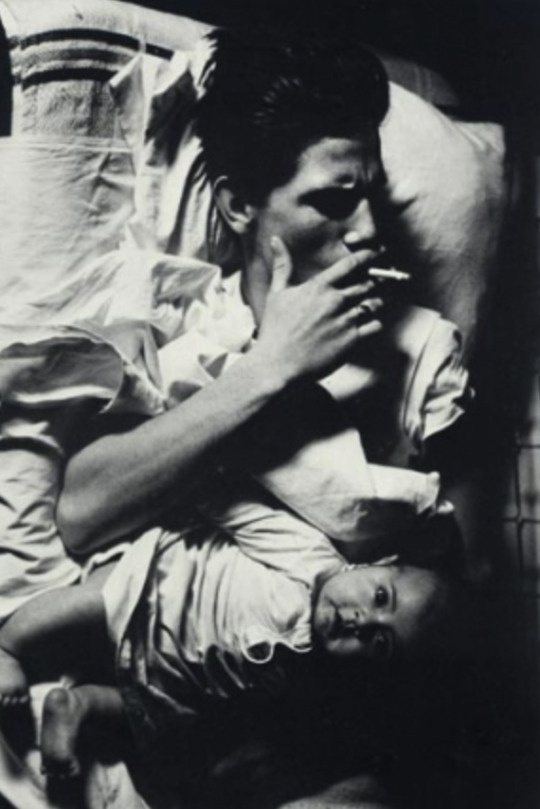

Larry Clark’s collection titled “Tulsa” elicits a feeling that is hard to place. I suppose the most overwhelming and immediate reaction that comes to mind is discomfort - an urgent discomfort. The compilation of images of drug use, what seems to be a gunshot wound completely devoid of context, reckless behavior and then - casually interspersed throughout the rest, a baby. The series is heartbreaking and beautiful at the same time. It presents itself as a honest portrayal of what a community of people’s lives are actually like. A blatant and unapologetic depiction of a way of life that so many of us would look down on. But we are forced to look and it is breathtaking and suffocating at the same time. They are the kind of images that stay with you. And the funny thing is, its hard to place where Clark’s actual artistry fits into it. The circumstances depicted are so striking in themselves that only afterward do you go back to notice the beautiful composition of it all. His work provides a layered experience - a beautiful and disturbing one.
0 notes
Text
Julia Kupiec Mini-Research Paper
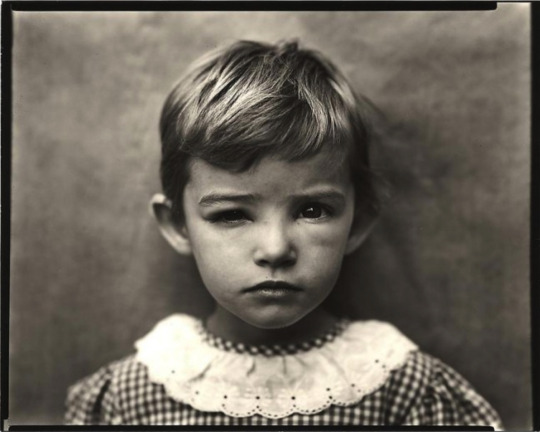
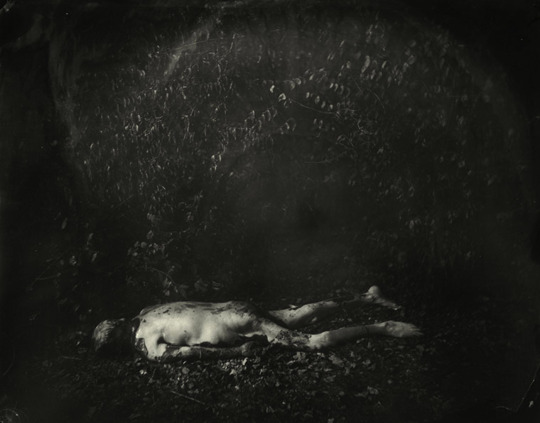
The most obvious tradition Sally Mann’s images seem to consistently fall into are the aesthetic practices and thematic elements of southern gothic photography—which seems to be as much interested in the deeply flawed, disturbing and grotesque as the beautiful. Often, images of this genre find a way to blend the two seemingly separate realms into one, producing photographs that are disturbing, intriguing and uncomfortably beautiful. In her memoir, Hold Still, Mann notes that her personal life has been flooded with a "payload of southern gothic: deceit and scandal, alcoholism...car crashes...clandestine affairs...and maybe even bloody murder.” Mann inherited the role of “provocateur” from her father. He also instilled her shameless attitude toward the flesh, photographing her nude as a child in what Mann deems to be “terrible art pictures.”
Mann’s images are consistently unnerving and beautiful - however there is an interesting dichotomy between two of her more famous collections - the contrast between them arising from the different means by which Sally Mann created images that are meant to alarm. The first collection is titled “Body Farm.” It is quite literally a handful of images of rotting corpses taken the University of Tennessee’s anthropological facility at Knoxville, aka the "body farm", where human decomposition is studied scientifically. Mann’s images show these decaying bodies scattered in the dirt - the subject matter alarming in and of itself and the eeriness of the actual pictures accentuated by Mann’s practice of creating ominous images through her photographic process. The corpse in this particular photo is surrounded by dark and indiscernible shadows - the only light in the image reflecting off of the decomposing flesh.
Mann’s “Body Farm” is certainly meant to shock - following suit with her southern gothic roots - the subject matter of the images themselves are disturbing and grotesque and the beauty of the collection is found in Mann’s composition and, perhaps, her daring to capture such images which seem so off-limits. However, there is a potentially more interesting and, surprisingly, even more controversial attempt at eerie imagery accomplished in Mann’s photographs of her immediate family - namely the photographs of her young and often naked children depicted in unnerving circumstances.
“The family portraits began in 1984, when Jessie came home from a neighbor's, her face swollen with gnat bites. Mann put her against a wall, took a dead-on picture and called it "Damaged Child." "That picture made me aware of the potential right under my nose," she says. The next day, with Jessie's face still lumpy, she arranged props around her and took more pictures. From its inception, the family series has played around with these two antagonistic elements: factual documentary and contrived fiction.”
It is with her family portraits that Mann strikes a very interesting and successful photographic method - one that plays with our innate expectation of photography as a tool to document which Mann turns on us with her intention to storytell. Here, Mann digresses from taking photographs of things that are actually disturbing in reality (such as a collection of rotting corpses) and turns to taking photographs of things that are wholly innocent in reality - her children. The eeriness of her images is now derived entirely from her ability to create what is not there - to storytell through her photographic method instead of simply to document what is already there. This is where Mann takes her own spin on the Southern Gothic genre.
Unlike other works of photography within the genre, Sally Mann’s images more often not taken of things which are actually disturbing in reality. They are taken of utterly normal occurrences, but the disturbing aesthetic within the image is produced by a dramatization on Mann’s part—an act of fiction, of subtle insinuation, of storytelling. Many, if not most, southern gothic photographers snap images which visually shock by their reporting of the reality behind them. It is not the image that dramatizes the disturbance—it is more the this is real factor from which the images derive their energy. Mann’s “Body Farm” collection would fall into this categorization - and yes, it is a striking and beautiful compilation of images. However, I find her family collection to be the more interesting of the two. Harmless portraits in reality that still manage to shock their viewers purely through Mann’s image making as a photographer and artist. Here she successfully and gracefully combines two antagonistic elements: factual documentary and contrived fiction.
0 notes
Text
Julia Kupiec Gallery Assignment
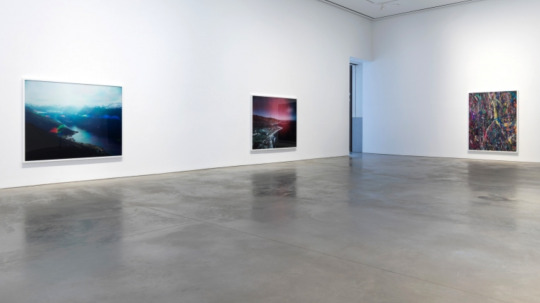
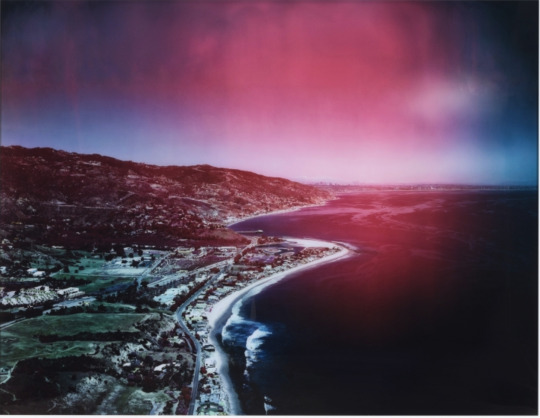
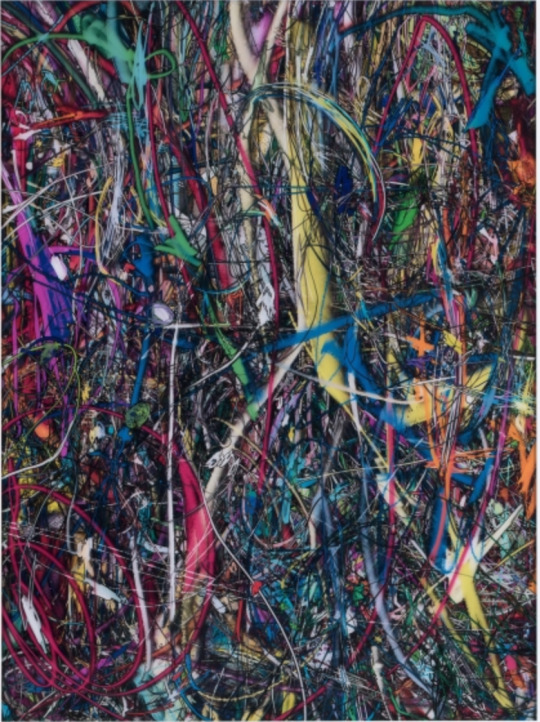
For my gallery assignment, I made my way over to 303 Gallery on 21st street to see their exhibit of Florian Maier-Aichen’s new photographic works. 303 Gallery is familiar with Maier-Aichen’s work as I later learned that this exhibition is the fifth time they’ve shown one of his collections.
The exhibit is stark and barren - upon entering one’s eyes are immediately drawn to the large and colorful photographs hung on the otherwise empty white walls. It seems to be that their goal is to make the room feel completely desolate aside from the photographs on show - it draws attention to them without distraction, but also elicits a somewhat intimidating feeling due to the whitewashed environment. It feels as if it is an environment that says “this is a gallery” and the choice to make the images the only objects in the room elicit the feeling that “this is art.”
The pictures themselves are rather striking. The collection is a compilation of beautiful overly-saturated landscapes (often with colorful light flares imposed over them) and hectic Pollock-style photographs of what seem to be strings that have been scribbled over in some sort of mixed medium format (I believe he achieves this effect but literally drawing on the photographs and then further manipulating the image in photoshop).
It seemed a strange choice to me to group these two different types of images together - landscapes and strings, but somehow the collection fits together as a whole. Perhaps it is the consistency of the intense color in the images, or the fact that both feel organic in a way - landscapes and indiscernible chaos.
0 notes
Text
convictions of Home
“My father brings home an overflowing bouquet of flowers -- he knows my mother’s favorite color is purple and that she does not like roses. The next morning she repurposes them for her open house at a stranger’s home. My father tries to hide his heartache and my mother hasn’t the slightest clue. For 29 years they have failed to meet each other's expectations and I never knew.
With my parents sudden divorce as the catalyst, this series reflects what it feels like when one’s most deeply held convictions splinter -- when the unbreakable breaks. I am both the subject of this overwhelming sadness and the witness, caught between my desire to be both child and friend.”
Piper Rollins





0 notes
Text
Julia Kupiec Final Project
I remember when my good friend Maria told me she was moving in with her boyfriend, Harrison. Mostly, I remember feeling about 10 years old as I feigned the absolute most adult response I could think of and asked if she wanted her own bathroom cause, like, boys are hairy and stuff. On the inside, my stomach was turning inside out. WHAT? We’re definitely not old enough to do that yet… right?
Maria and Harrison were the first two of my friends to take such an adult step forward in their relationship - and it was one of those cornerstone landmarks in life that smacked me across the face and reminded me that adulthood is creeping up on me.
Personally, I still feel like a little girl playing dress up when I buy a bottle of wine and (poorly) attempt to cook pasta on my semi-broken stove - but I took one step into Maria and Harrison’s apartment and felt like I had walked into the trendy urban edition of a 1960’s catalogue for Homes and Gardens. To give it perspective, they own Art- like real Art with a capital A. Not like the lowercase art that I have tacked up above my IKEA bed frame that’s actually just a page I cut out of an art magazine I stole from my dentist’s office.
I am in awe at the grace with which Harrison and Maria have glided into adulthood. The thought was startling at first, but after the dust settled, I realized that it has been sort of beautiful - seeing two of my friends in love and taking a step forward together. It’s made me think about the strange process that all of my friends and I are going through at this juncture in our lives - trying to make homes for ourselves for the first time since leaving our parents. It might not have much to do with owning Art instead of “art” or whether or not we have the stomach to clean out the hair from the drain, but rather the people we surround ourselves with.
I may still feel like a faker when I reluctantly place my coffee cup on a coaster, but for the first time since I moved to New York - I feel like my apartment is my home and that I’m not simply a kid at college - but a young adult living on my own. I’m surrounded by people I love and, yeah whatever, we’re all getting old. But we’re doing it together and when I’m 40 I’ll read this and crack up because my 20 year old self wrote an artist's statement about being old. Idiot.
So this project exists as my strange congratulations to Harrison and Maria for creating something beautiful for themselves and as a thank you for letting me be a part of it.





0 notes
Text
Salima Sarsenova
This project is an exploration of my relationship with my best friend Aya. As kids, we were inseparable. We went to the same school and were roommates throughout most of college. Although we are still very close, we are no longer roommates and don’t see each other as often as we used to. Through this series, I wanted to capture the intimate friendship that we still share, but also convey a sense of separation that has inevitably appeared as we grew up, matured, and became more consumed by our own lives.
These stark and overexposed images are a representation of how I still see her in my mind, doing ordinary things around the apartment that we used to share. They are nostalgic scenes from my memories of seeing her at home everyday, that are starting to slowly fade in my mind. Inspired by photographer Jurgen Teller’s work, I chose to use flash to incorporate harsher lighting when working on this project because I wanted the images to look raw and overexposed, almost intrusive. The simple compositions, often with large empty spaces of black and white, introduce a feeling of timelessness, but also create an ambiguous atmosphere that is no longer as familiar to me as it used to be.




0 notes
Photo










Walking in Manhattan
“This was a place that can only be appreciated from the distance, but not a place where I should live in.” Looking at the illuminated Manhattan from the Jersey City, I made the conclusion for my first trip to New York City. It was last April when I first visited NYC. Just like most tourists, Times Square became my first spot to go. However, when I finally stood in the middle of Times Square, I was disappointed. I found myself stuck in the crowd, cannot even move. I saw people squeezing in between each other; drivers beeping their horns fiercely, just hoping to get out of this place as soon as possible; policemen standing in every corner of the street. There was nearly no eye contact or communication in this bustling, cold place. Yet, Manhattan was such a strange place: though I clearly knew I didn’t like it, it still somehow attracted me in an inexplicable way. Under that attraction, I made an impulsive decision—accepting the offer from NYU. Now, having lived here for more than one year, my opinion about Manhattan gradually changed. I started to find the beauty hidden in this city. I like the morning of Brooklyn bridge, love the people in Washington Square, and appreciated the beauty of New York’s architectures. And now I can see myself blend in to the New York City. I really loved walking and taking pictures on the street of Manhattan, trying to capture the hidden beauty in this bustling city, and I did. The last photo in the album comes from a double-exposed negative. I shot the blossoming flowers on the ground first, and then lifted my camera up to a building under constructions and exposed the film one more time. I wanted to see what would happen if I blended the nature and the city together. I was really surprised to see it turned out to be so dramatic and harmony. I think the beauty of this city probably just lies in here—it is a city that could blend everything all together.
--Danni Tang
0 notes
Photo






"good at dancing"
artists make art to be heard. is this not the driving factor behind most people’s passions as artists? to engage and share their voices creatively through various mediums so others can hear what they have to say? musicians using audial complexities, photographers using visual perspectives, poets using lexicographic intricacies, all to communicate how they feel, and what they want to say. dancers use their bodies, and work to physicalize textures and landscapes of feelings through codified or structured articulations of limbs and joints - bodily things they share with practically every other human being. so what sets our bodies apart? why train so hard, to sculpt or hone different dance techniques and movement patterns, just to articulate the feelings that we feel, that everyone feels, so that we can be heard?
in a way we are constantly making our art, constantly performing, since (one could argue) there is not a moment in life when we are separate from our bodies. in the collection of work, “good at dancing”, i was really just taking photos of my friends leading up to a show. but, things started to take shape - in the way that the different poses and moments i was capturing started to communicate what these dancers felt, what they wanted, who they were. i try to capture the rigorous rehearsal and training processes we underwent, and the moments when we are at rest. and i try to blur the line between dancing and not, artist and not. are you hearing what their bodies say?
-claire you
0 notes
Text
Ace Buckley- Artist statment
Bombarded with stories from parents and older siblings, Youtube “hype videos”, and raunchy Hollywood portrayals, children build-up expectations of the college experience. We build this whole narrative in our head made up with all the things we want to experience and couldn’t until we are living by ourselves in a new place and surrounded by new people. When kids think of the “typical” college experience they think of specific themes - drinking, school spirit, rural town traversed by bikes, greek life, and sports.
Like any boy who grew up playing football and hearing stories of my mom’s time at Stanford University, I wanted the typical college experience. My best friend, Jeremy and I would dream about playing football together at a big college and hanging out in the quad. It was something that kept me going thought out my time at a high school where I felt I didn’t fit in.
The “typical” college experience was my plan until junior year when I tore my ACL. Thus ended my football season. I used extra time in my schedule to throw myself into my hobby of filmmaking. Two years later, I got into my new dream school, NYU, as a film major - thus making the choice to give up on my former dream of the typical college experience.
Now that I am in my last semester at NYU, I have been thinking a lot about what could have been. I especially thought about this when I made the decision to go visit Jeremy at the University of Michigan for their rivalry game against Ohio State - the last game Jeremy will watch as a college student. I couldn’t help but think about what the last four years of my life could have been like if I had made the same choice that Jeremy did. I don’t feel regret for taking the path I took, but it was hard to believe how different Jeremy’s life has been from mine since we left for college - all just because of a choice of school.
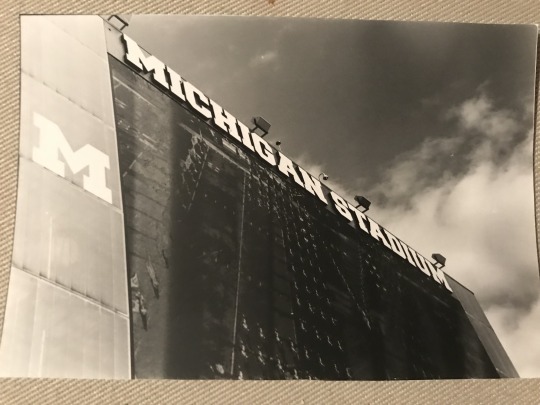




0 notes
Photo









Artist's Statement
For a long time, I am interested in how people identify themselves. A dentist could be a guitarist in a band as well after his work, a student also could be a teacher when he teaches anything new to others… The tags about ourselves construct every real person, identify who we are and record our past and our now. The tags could be found because they are hidden in our lives, like the objects which we use everyday, the collections we gather for a long time, the layout and decoration in our bedroom and the places we usually go for eating, exercising, or studying, etc.
The photo journal focuses on the international students from China, records the details about their Chinese factors, their lives and their identifications in New York City. There are five people in total in the journal. A portrait combined with several small daily photos for each of them will be presented in sequence. And I name the journal as IDENTIFACTION
Reynaldo Mengze Wu
0 notes
Text
Emily Hime
Final Project Statement
When I began this project over thanksgiving break, I was planning to tell the story of one person who is very important to me. A series of unfortunate events occurred which caused me to restart my project, and ultimately I am grateful for those events. There is a phrase that I have known since Kindergarten, “there are no mistakes in art,” which ended up being very prevalent in this project. I say this because now, instead of telling the story of one person who I already know, I was able to learn about a very diverse group of people as a result of aforementioned unfortunate events. In this project, I used a compilation of photos of people, quotes by the people, and images of human creations. These are the kind of projects that lead to growth both personally and artistically.
Throughout this course, I have learned that the best pieces of photographic art are the ones that tell a story. In my research of Corinne Day, I discovered that her early works which denied the standard of fashion photography and revealed truths about that world were much more valuable than her later works. The work of Ryan Mcginley went through a similar but less drastic transition, and the reason is a change in motivation. In the beginning, they were making art to tell a story and make a statement, but by the end of their careers they were making art for a profit. I highly support making profits off of your art, but compromising artistic integrity is something I condone. Corinne Day definitely compromised hers, and although her later photos were beautiful, I personally think beauty is less important than artistic purpose. I am so pleased with this project because it gave me an opportunity to tell a story about the world.
Although this project came unexpectedly, I am grateful that it did. I am excited to share this piece of work because it involved much more exploration than my previous idea, and I think that fact is evident.




0 notes












